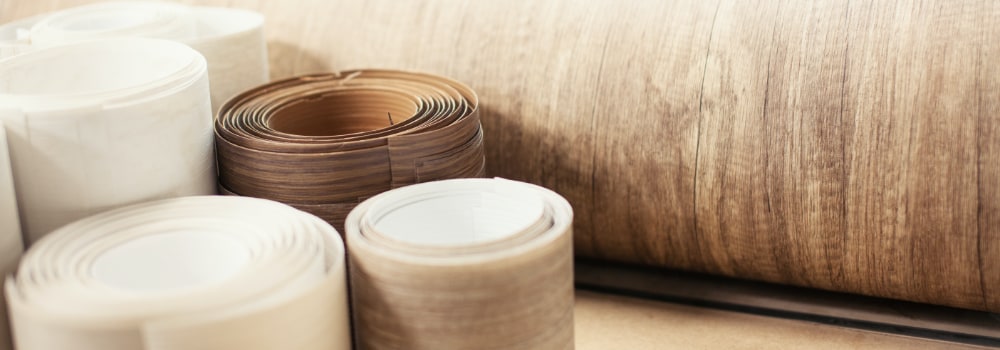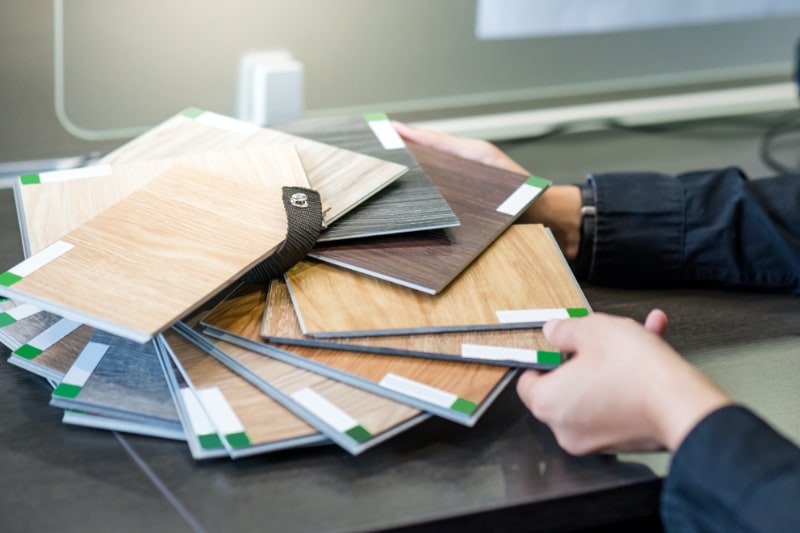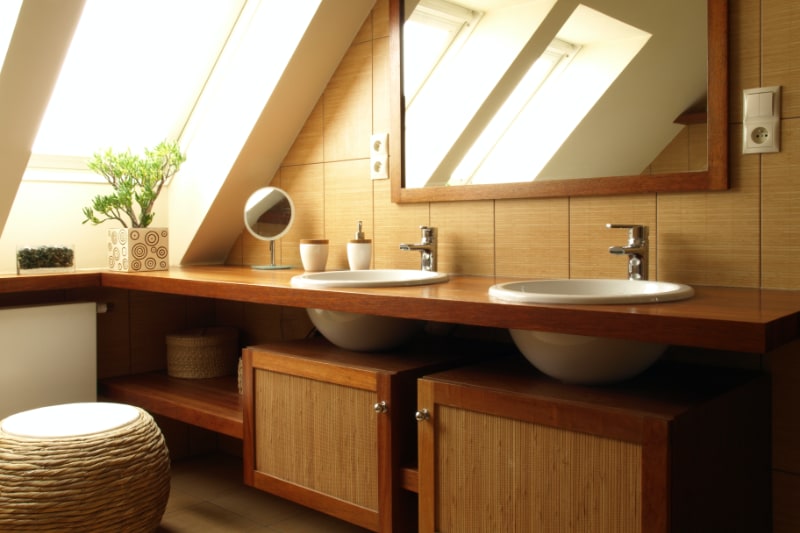You may not be familiar with real wood veneer or its existence in your daily life, but it’s everywhere. Wood veneer is real wood that is thinly sliced, usually less than 1/32” thick. Natural wood veneers are normally applied to a structural core material like cabinet grade plywood, MDF or particle board. Although there are many uses, the most common ones you see every day are:
- kitchen cabinets
- bathroom vanities
- bookcases
- dressers
- nightstands
- other casewood applications

 Manufacturing Real Wood Veneer
Manufacturing Real Wood Veneer
Real wood veneer comes from mostly hardwood logs grown domestically in North America or imported from various countries around the world. Slicing is the process of converting a hardwood log to veneer. This operation is akin in scale to a sawmill operation for cutting wood into boards, however veneer logs are treated differently. They are first soaked in large vats of hot water for an extended period (2-3 days) to “soften” them and make them pliable. They then move to the slicing operation where they are sliced paper thin using one of 2 or 3 main techniques requiring different slicing machines. From there they go through a drying operation and then are trimmed and bundled for shipment to fabricators.
Real Wood Veneer is Better Than You May Think

Until you understand more about real wood veneer, you may have an unfavorable opinion about it. Wood veneer is a traditional and significant part of woodworking and furniture making that’s been around for hundreds of years. They are unique and beautiful when finished. Veneers have depth, color, character, and beauty that can’t be replicated by plastic laminates, printed paper, vinyl or foil overlays. They are a better use of natural resources because thin veneers can yield 30x to 40x more than solid lumber. Although cost may be a factor, real wood veneers should not be indicative of cheap or inferior quality construction. Quality wood veneers can enhance and add unmatched beauty, versatility and functionality to many projects.
